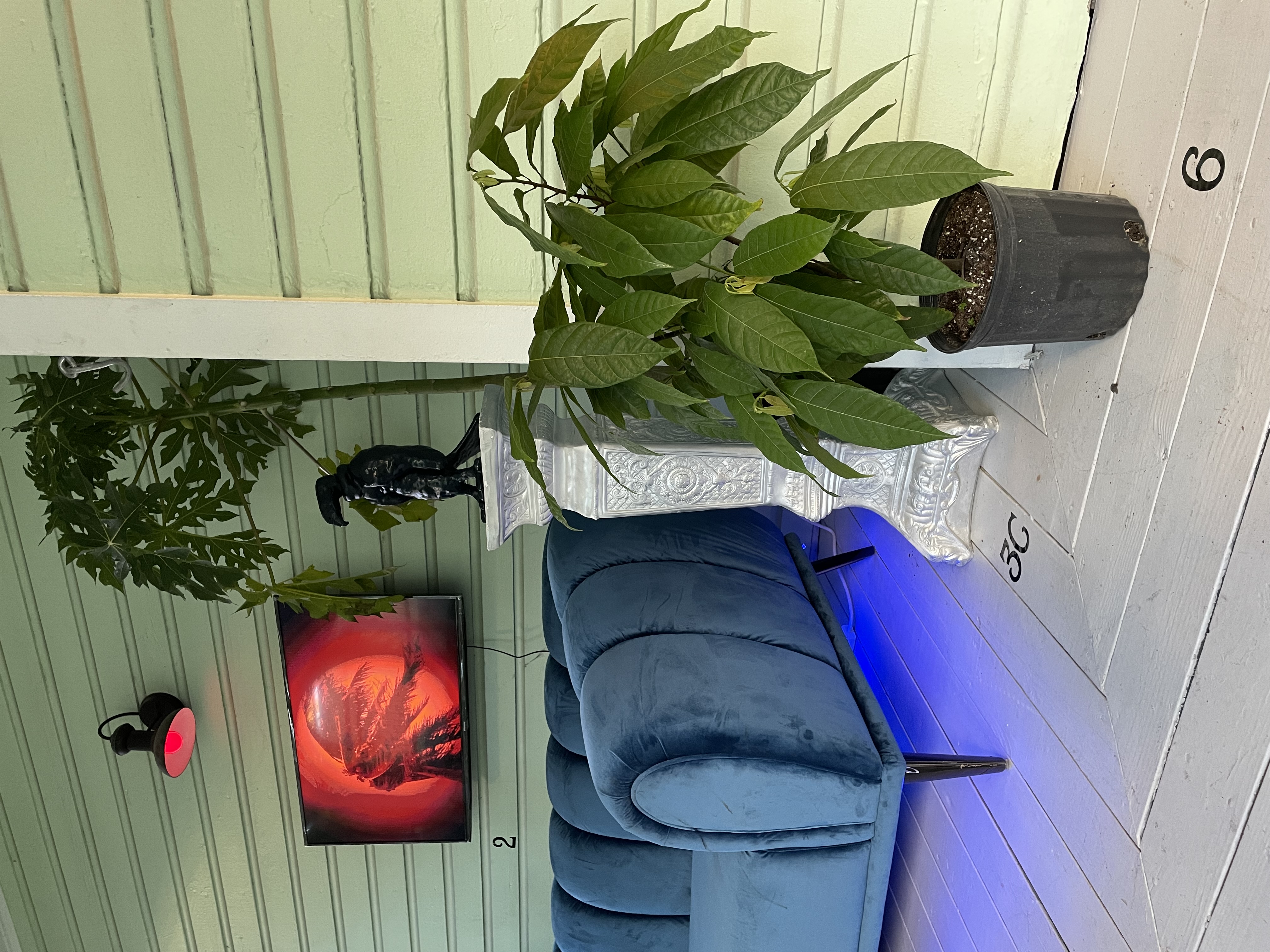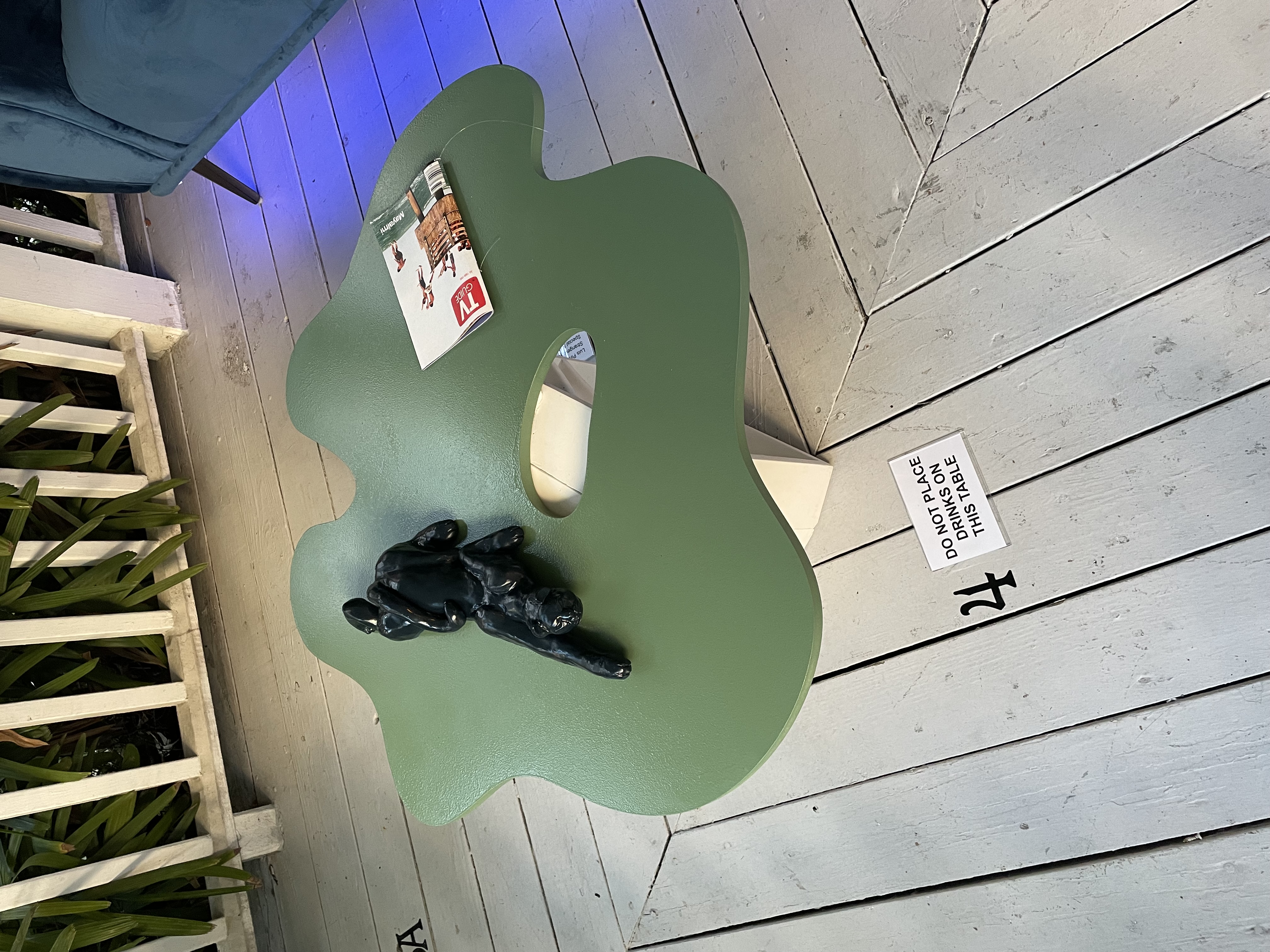Remembering the sacred

“Remembering the sacred (Installation view)”
Mixed media installation
Size variable
2021
“Remembering the sacred” explores the concepts of belonging and heritage in relation to tropical plants, tracing their journey from their native habitats in South America, Central America, and Africa to North America and Europe. The piece uses the metaphor of post colonialist peoples and plants to explore how history and identities can be both intertwined and uprooted. It examines how these plants have been used to fuel colonial empires, becoming emblematic of exotic Latin American identities, and how capitalism has popularized them as modern houseplants. The plants are a representation of the millions of people who have been forcibly taken from their homes and forced to migrate to new places, often times becoming a part of a new culture or identity. This history of cultural identity and colonialism is inextricably linked to the trade of tropical plants and the bodies of the people taken from these lands. This trade has reshaped the modern world and how BIPOC perceive their identity, as the exotic label applied to these fruit-bearing plants mirrors how BIPOC are perceived. This narrative of displacement and oppression is still felt today, as many of these plants, including those used in the piece, are still being used to fuel the global economy. These tropical plants now symbolize local identities far removed from their place of origin, often being labeled as culturally Latin.

“Remembering the sacred (Installation view)”
Clockwise from top:
- “Hurakán Guabancex, 1992”
1124 X 576 px
04:54” looped from 01:13”
- “Associations with a place: Banaana, Ababai, Cacaua”
Plants (Papaya), pots
Size TBD
- “Mis guías” : (“Halpate”, “Michi”, ”Buitre”)
“Buitre” 7.5 x 7.5 x 12"
- “Bisabuela, Pacha”
34 x 32.58 x 17”
- “Mis guías” : (“Halpate”, “Michi”, ”Buitre”)
“Michi” 17 x 5.5 x 3.5"
- “Mayaimi"
Edition of 20
- “Broam"
74" x 37" x 32"
"Broam" is a multimedia experience that takes the viewer on a nostalgic journey. The Suede sofa, neon lights, and thumping bass are a tribute to a bygone era of Miami. A time when the streets were filled with the distinctive sounds of Miami Bass. The furniture, lighting, and soundscape create the perfect atmosphere for reminiscing about the 80's and 90's of Miami. “Broam” is a term used in rap slang to refer to a certain model of car that was popular in the 1980s. Through the piece, viewers are able to relive the past in a way that is both immersive and meaningful.
Nostalgia serves as a driving force for many of the pieces in this installation, with “Hurakán Guabancex, 1992” paying homage to the powers of nature and the gods of indigenous cultures of the Caribbean. The title of this work references two deities – Hurakán, from which Huricane is derived, is a Mayan and Taino god of wind and storm, and Guabancex, a Taino goddess who was renowned for controlling storms spawned by Hurakan. It is also a reminder of the catastrophic Category 5 hurricane of 1992, Hurricane Andrew, which devastates much of South Florida and has become an enduring symbol in pop culture. The 1:13” video loop of swaying red palm trees is a distinct visual that many Miamians and Caribbean natives can relate to. The piece is a representation of both the power and fragility of nature and the importance of remembering our past. The video loop and the use of color, create a sense of stillness and a sense of continuity, a never ending movement and destruction. While the low frequency rumble brings forth an uneasy feeling. The title is meant to evoke a sense of remembrance and reverence for the power and beauty of nature, and the importance of our ancestors.




“Associations with a place: Ababai” + “Mis guias: Buitre”
“Associations with a place: Ababai” + ““Mis guias: Buitre” + “Associations with a place: Cacaua”
“Associations with a place: Banaana” + “Mis guias: Halpate” + “Mis guias: Michi”
“Mis guias: Halpate”
"Mis guías", which is Spanish for “My guides” pays homage to my Peruvian ancestry and the regional Seminole Nation located in South Florida. The piece is a sculptural representation of Andean mythology and cosmology. I combined the sacred animals from Andean culture with the local fauna of South Florida to reflect my upbringing in the area. The names of each totem are derived from different cultures: Halpate is the Seminole name for Alligator, Michi is the Quechua name for Cat, and Buitre is the Spanish name for Vulture. Each animal totem in Andean mythology (the condor, puma, and snake) represent a different level of existence called the "Pachas" or Worlds. The piece acts as a three-dimensional display of where I was born, where I grew up, and how I am perceived by people who do not understand my background.
In addition to paying homage to my ancestry, "Mis guías" also serves as a spiritual guide for me. The artwork is meant to be a visual reminder of my culture and identity, reminding me of my connection to my homeland, the place where I grew up, and my ancestors. By having these animals as my guides, I am able to stay connected with my cultural roots and redefine my spiritual connection. Identity is multifaceted—it is not just our cultural background, but also our environment, experiences, and values. It is a complex concept that’s constantly evolving and shifting as we interact with the world. Identity is composed of several layers, including our family history, cultural background, language, race, gender, and sexual orientation. We are constantly learning about ourselves and how we fit into the world around us. "Mis guias" help to construct that for myself as an immigrant looking to find their place in this world.


“Mis guias: Michi” + “Mayaimi” + “Bisabuela, Pacha”
"Mayaimi" was an edition of 20 artist books that focused on my upbringing in Miami Beach during the late 1980s and 1990s. The images were of places that had been altered due to the city's development, yet they still contained a sense of familiarity to Miamians. The title, "Mayaimi," was taken from the Native American nation that used to inhabit the Lake Okeechobee area. The book evokes nostalgia in the viewer and provides a glimpse into the drive behind the installation.
Write up for installation:
Luis Pinto's installation, "Remembering the Sacred", is a poignant journey through nostalgia. Pinto uses sentimentality to weave stories of colonialism, shamanism, Miami pop culture, and gentrification, all while commemorating his Peruvian ancestry, adolescence, and the native cultures of South Florida and the Caribbean.
In the centerpiece of the installation, "Broam", Pinto utilizes a microsuede electric blue loveseat lined with LED lights. The loveseat is fitted with a 10" subwoofer so that the viewer can feel the sounds of Pinto's homemade DJ mix. “Miami (Bass) music has influenced who I am,” said Pinto. The sounds have been manipulated so that only bass frequencies can be felt. "Broam" is a nod to the slang used in rap lyrics, highly utilized in the 1990s.
Surrounding the blue Loveseat are multimedia works depicting totems, pieces of architecture, plant life, and moments in time. The diversity of the mediums is reflected in the titles of the works, which use different languages and English words derived from native tounges of the area.
Through this installation, Pinto marks a new venture, diving deeper into his past in order to create conversations around the subject matter that is most important to him. Pinto's work rides a fine line between the physical and metaphysical, and the deep human connection we all share to memory and time.

“Remembering the sacred (Installation view, night)”